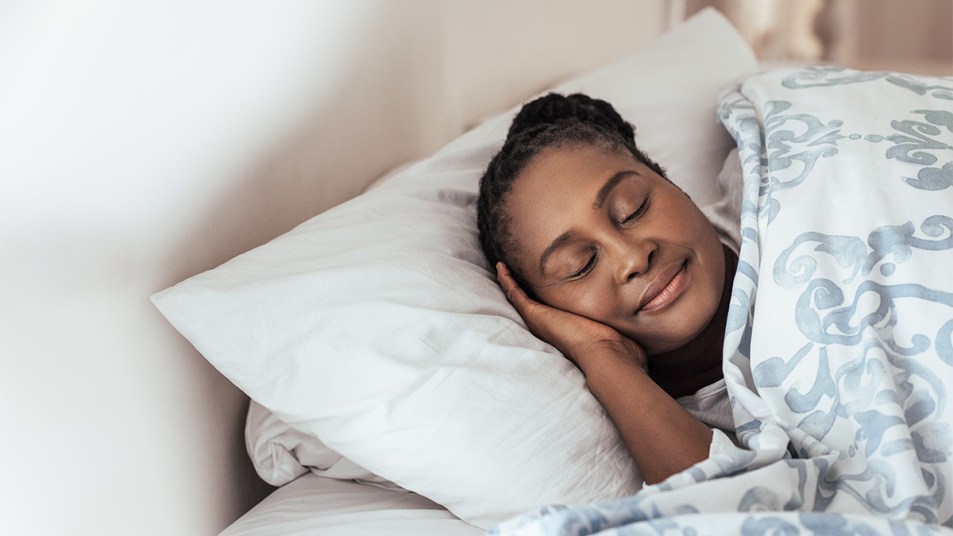Slow Wave Is the Latest in Sleep Science — Here’s Why You Need It (And How To Get It)
Simple ways to catch Zzz's with ease.

Getting a great night’s sleep is a constant goal, but it can become more difficult as you age. The reason: Your duration of deep, slow-wave sleep (SWS) typically declines with age due to the fluctuating amounts of sleep-related hormones your body produces. Hence why, you may have a hard time falling and staying asleep at night. When it comes to SWS, this type of sleep is necessary for strengthening your memory and immune function. Plus, a restorative night of rest ensures you won’t feel sluggish or groggy the next day. To get the benefits of slow-wave sleep, you’ll need to make small changes to your daytime and nighttime routine. Fortunately, these three simple tips are research-backed to help you clock more sweet, deep Zzzs.
#1: Eat plenty of fiber during the day.
A study published in the Journal of Clinical Sleep Medicine suggests that fiber-rich foods have a sleep-boosting effect. This study involved 26 adults who participated in a five-day experiment. Participants were assigned to either a short (four hours in bed) or habitual (nine hours in bed) sleep group. During the first four days, all participants ate a controlled diet rich in carbohydrates, protein, and fat. On the fifth day, participants were allowed to select their foods for each meal. Researchers then collected and analyzed data to find a connection between daytime food intake and nighttime sleep on day five.
One key finding is that greater fiber intake led to more SWS in participants, while high saturated fat intake intake was associated with less SWS. The authors didn’t reveal a specific reason for this effect, so more research is needed to investigate the connection between fiber intake and sleep.
#2: Switch on ‘pink noise’ before bed.
Play “pink noise” quietly in the background when you turn in for the night, and a small 2019 study suggests you may boost your ability to reach the deepest levels of SWS. Pink noise mimics the frequencies found in nature, such as waves lapping on a beach or leaves softly rustling in the wind. For this research, nine adults with amnestic mild cognitive impairment completed one night of acoustic stimulation where pink noise sounds were administered through headphones. One week later, participants completed a night of sham stimulation that didn’t include sound delivery.
Researchers found that acoustic stimulation with pink noise increased SWS in participants compared to sham stimulation. The authors theorize that your brain associates this type of low-frequency sound with a sense of safety, which allows our mind to be less on-guard and more fully relaxed. Tip: Tune into the YouTube channel “Sleep Is the Foundation,” which streams 10 hours of lulling noise for free.
#3: Drift off to hypnotic audio.
Research published in the journal Sleep suggests you’ll increase slow-wave sleep significantly by listening to soothing audio. A total of 70 adults participated in this study wherein they either listened to an auditory text with hypnotic suggestions to “sleep deeper” or a control tape before taking a 90-minute nap. Researchers found that hypnotic suggestions were linked with increasing the amount and duration of SWS in a midday nap compared to the control tape. The authors say the hypnotic text calmed the centers of the brain responsible for attaining SWS. This helped participants let go of stressors so they could snooze soundly.
This content is not a substitute for professional medical advice or diagnosis. Always consult your physician before pursuing any treatment plan.
A version of this article originally appeared in our print magazine, Woman’s World.












